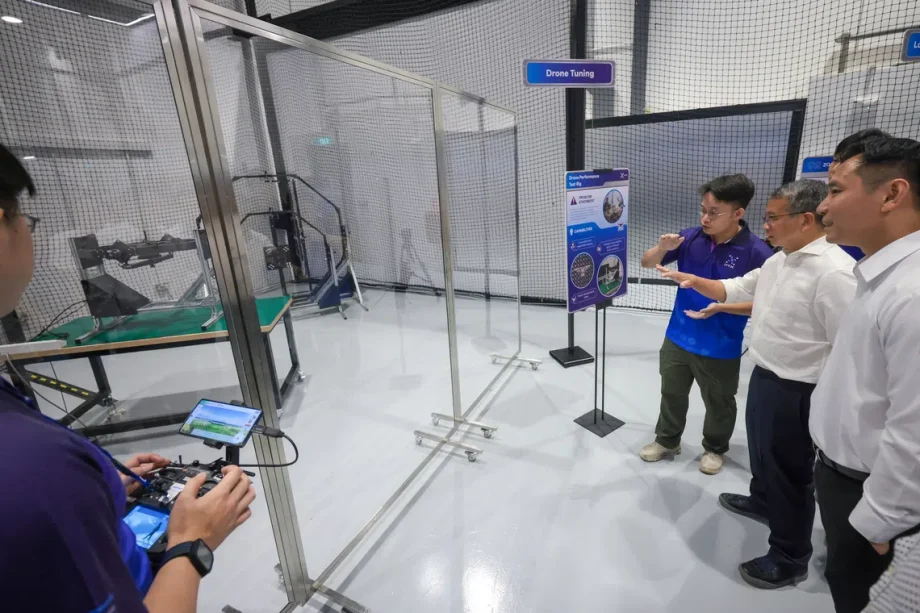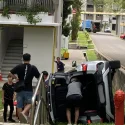SINGAPORE – An anti-drone drone that captures hostile drones using nets, and an underwater search robot that uses artificial intelligence (AI) – these are just some of the technologies being developed in a facility in Jurong West.
Called Garage@HTX, the facility by the Home Team Science and Technology Agency (HTX) is located at 8 Cleantech Loop, and is Singapore’s first such facility built specifically for the testing of public safety assets.
It was officially opened on Oct 13, with HTX hosting an edition of its innovation and technology event series TechXplore at the location.
One project exhibited at the event was a drone interceptor that is the first of its kind in the world to operate independently of the Global Positioning System (GPS) and the Global Navigation Satellite System.
Current counter-drone systems rely on blocking radio and GPS signals, making them unreliable when GPS signals are already weak.

One project exhibited at the event was a drone interceptor that is the first of its kind in the world to operate independently of GPS and the Global Navigation Satellite System.
ST PHOTO: JASON QUAH
The drone interceptor being developed by HTX, however, can hunt and capture hostile drones even in places without GPS signals. It identifies the hostile drone and fires netting to ensnare the target, before transporting it to a secure location for removal or disposal.
HTX said that while the drone interceptor is currently operational, it will need compliance verification before it can be integrated into the current counter-drone systems being used.
Other drones on display included one powered by a hydrogen fuel cell. Current drones are typically powered by lithium-based batteries, with a flying time of about 30 minutes.
But the flying time of one powered by a hydrogen fuel cell is potentially four times longer, making such drones more suitable for the demanding missions of Home Team officers.









